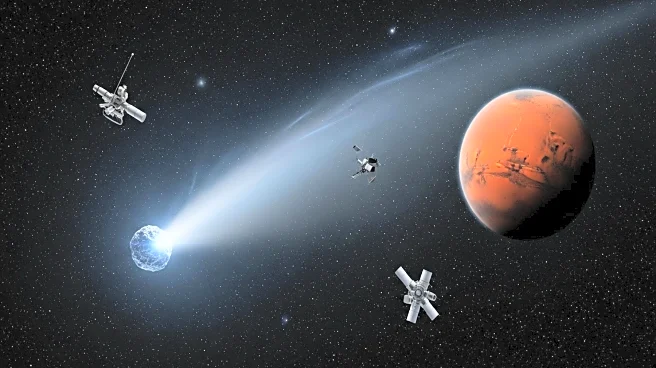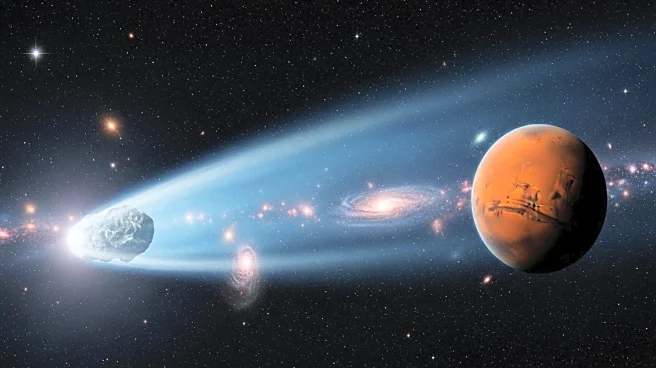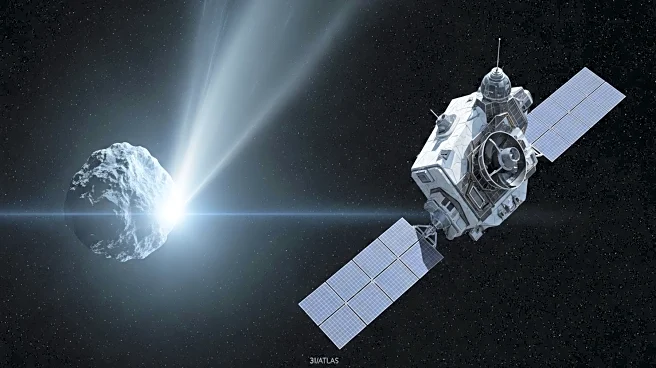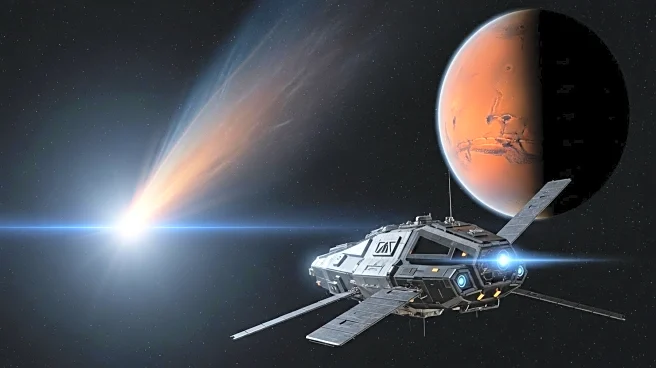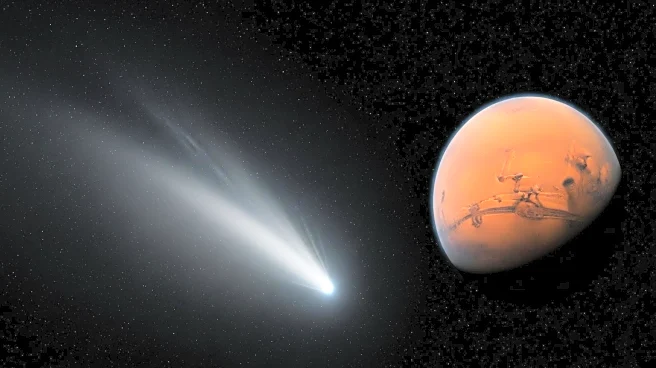What's Happening?
The interstellar comet 3I/ATLAS has been observed shedding water at an extraordinary rate, akin to a fire hose on full blast, before reaching the sun. This discovery, made using the Neil Gehrels Swift Observatory, provides evidence of water activity far from the sun, challenging existing models of comet behavior. The comet's high carbon dioxide to water ratio suggests unique chemical processes.
Why It's Important?
The findings offer new insights into the distribution of life's building blocks across planetary systems, indicating that water and other essential elements are not unique to our solar system. Understanding the behavior of interstellar comets like 3I/ATLAS could refine models of planetary formation and the conditions necessary for life. This research may also inform future studies of cometary chemistry and dynamics.
What's Next?
Further observations are expected to explore the comet's trajectory and interactions with solar radiation, potentially revealing more about its composition and behavior. Researchers may use data from various telescopes to study the comet's chemical processes and their implications for planetary systems. These findings could contribute to models predicting the behavior of interstellar objects.
Beyond the Headlines
The study of 3I/ATLAS challenges existing theories about the formation and evolution of planetary systems, offering new perspectives on the distribution of life-building materials. The comet's unique characteristics may lead to new hypotheses about the origins of comets and their role in cosmic evolution. This research highlights the importance of interdisciplinary approaches in understanding the universe.

